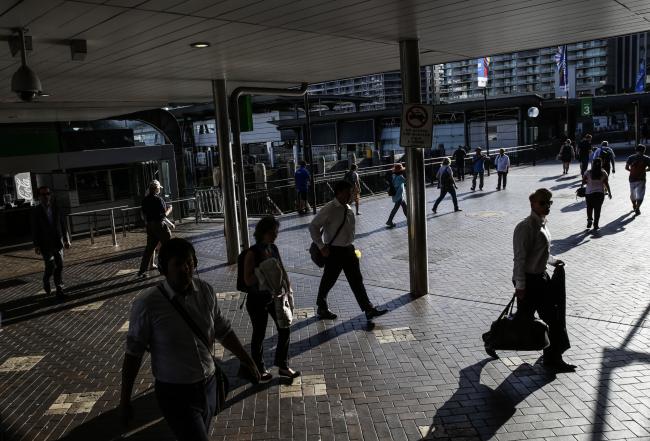(Bloomberg) -- Australia’s economy is this year expected to grow faster than its speed limit -- estimated at 2.75 percent by Treasury -- with inflation just above the bottom of its target, the central bank said in minutes of its April policy meeting.
Main Takeaways
- Reserve Bank of Australia says it’s more likely the next move in the cash rate will be up rather than down
- Given lowering unemployment and returning inflation to the midpoint of its 2-3% target “was expected to be only gradual,” members agreed “there was not a strong case for a near-term adjustment in monetary policy”
- Outlook for non-mining business investment growth remained positive; forward-looking indicators suggested spare capacity in labor market would continue to fall gradually
- Weak wage growth and retail competition damping prices suggested inflation would remain low for some time
- Sydney house prices have fallen a bit under 5% from mid- 2017 peak
State of Play
The RBA maintained its balanced outlook; however, it said an upward revision of 2017 household consumption data was a positive surprise and consistent with the booming labor market last year. The backdrop of synchronized strength in global growth is set to continue and inflation is likely to accelerate, reflected in a number of central banks withdrawing stimulus. As ever, the U.S.-China trade tensions are clouding the horizon.
Key Quotes
- “The possibility of an escalation in trade restrictions represented a risk to the global outlook that needed to be monitored closely”
- “The high level of debt in China and the significant share of financial market activity in unregulated sectors continued to pose important risks to the outlook for the Chinese economy”
- In Australia, “leading indicators continued to point to above-average growth in employment in the period ahead”
- “Over 2018, GDP growth was expected to exceed potential growth and CPI inflation was expected to increase gradually to be a little above 2 percent”
The Background
The board has kept its key interest rate unchanged at a record- low 1.5 percent for 20 months as it aims to boost investment and hiring -- while harnessing loan curbs to check asset bubbles from forming due to cheap cash. Australia’s economy has generated strong job numbers -- predominantly full-time -- though slack remains in the labor market, and as a result there’s tepid wage growth and inflation. Traders are pricing in little chance of a rate hike until next year.
